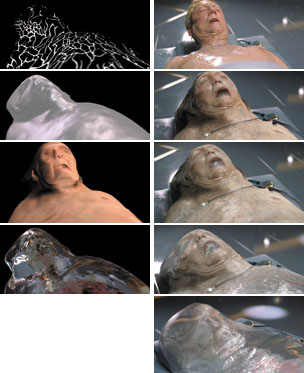Penned Related Portfolio Piece
#1:
Automatic cycling secondary animation tool for cloth and hair.
Mainly used for creating realistic movement for Finley's coat tails.
-video of animations with automatic secondary animation
-tool allowing for easy repetition of the process
-video of the full fancy Finley rig
Portfolio Piece
#2:
Chameleon model with neat color changing shader! :D

-model, and sculpt for thick scaly skin effect
-shader written in HLSL with the ability to change overall tone/color based on average color of the scene behind it.
-Turn table style render to show off color changing and model
Thesis Related Portfolio Piece
#3:
Thesis: Physics Simulations.
I'm going to focus on simulation resulting from particle collisions. Examples: simulations resulting from explosions, water, and trail (ex. bullet) particle effects interacting with a variety of different materials.
For now (if I stay in Maya):
-Rendered videos in Maya of n-cloth particles with attributes that can transfer to n-cloth rigid body simulations. Basically allowing for physics simulations to be automated based on a current particle system.
I may change the software program I use based on what is taught in the tech art class.
I will probably be reusing sections of my existing fracturing/demolition tool.
I may switch the order in which I complete #2 and #3 based on the shader class and work load due to Penned.





































